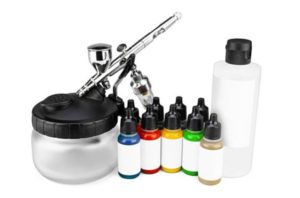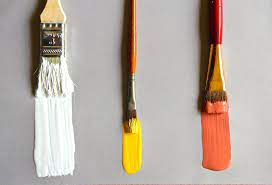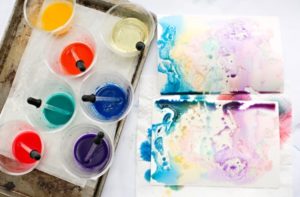
How 6 Things Will Change the Way You Approach Painting with Acrylic Paint for Beginners?
Ready to experiment with acrylic paint but unsure where to begin? Or perhaps you’ve already started painting, and you may need some advice.
For beginners, acrylics are excellent. They are more affordable than oils or watercolors, dry rapidly, and are often easier to use. You can get started and relish the creative process with the guidance of a few basic acrylic painting techniques. This post contains some important information for beginners that will change the way they approach acrylic painting. For more information, keep reading.
Painting with Acrylics
Acrylic paints are quite different from oils or watercolors in use due to their working characteristics. They are the most adaptable painting media due to the large variety of paint textures and mediums. Gouache paint are popular among artists who share a studio space or consider oil paints too harsh due to their drying and water-based formula. Since the paint is nearly dry and can be quickly applied on top, errors are simpler to fix. One can work with acrylic mediums similarly to oils and watercolors because of their versatility. Although many of your painting supplies will stay the same, working with acrylics requires some considerations.
A strong color scheme should be the first item on your list. As a beginner, you may find several kits with multiple color combination options. It is vital to have a variety of brushes in different sizes and shapes. The patterns you make in your painting will be under your greater creative control.
What to Paint with Your Acrylic Colors?
The most crucial step in creating an acrylic painting is selecting the subject or concept. You can’t just grab a canvas, put up an easel, and start brushing. Before picking up that brush, you need to visualize your subject.
These tips might help you in this regard:
- Find what genuinely attracts your attention by doing as much exploration as you can.
- To gain fresh ideas, try looking at things from several perspectives.
- Observe what makes you happy and appeals to your soul.
Tips for Painting with Acrylics
Here are some pointers that will help you improve your acrylic painting technique and change the way you approach the medium:
Utilize More Water
Your acrylic paint will get thinner when you add water, drying like a matte-finish watercolor. To add unique textures and shadows to your painting, apply a thin coat of paint.
Remember that this method functions best with absorbing, thick paper (like water paint paper).
The thin paint may leak and pool rather than absorb if you apply it on a canvas that has already been pre-gessoed or is water-resistant. To try layering, you can also use thinner paints and mediums like gouache or Liquitex.
Use a Paper Towel or Stiff Bristles to Dab
To produce a random, erratic texture that differs from traditional brushstrokes, dip a stiff-bristle brush in thick acrylic paint and dab it on the canvas acrylic painting.
Only the tips of the bristles will be in contact with the canvas when you begin dabbing it lightly, producing a sequence of natural dots. The region will grow more solid the more times you press the brush in one spot. Dabbing creates a considerably larger form with fewer gaps and contrast if you apply a bit more pressure.
Try Stippling or Repetitive Dabbing
Stippling is the practice of painting minute dots, typically in a variety of hues or tones, to produce an intriguing texture that, from a distance, your eye interprets as a solid object. It’s often with abstract paintings, and one can utilize it to give subjects in painting a realistic touch.
Dip a long, sharp brush into a generous amount of acrylic tempra brushes and poke the canvas to make a tiny dot to attempt this method. Greater pressure or utilizing a broad, circular brush will result in larger dots.
Sometimes, these dots are used by artists to depict shimmering, dazzling, or shining objects. You may employ this method to emphasize objects like waves, waxy fruit, and glass.
Experiment with Dripping and Acrylic Pouring
Do you want to suggest that it is raining or that something is melting in your painting? For making splashes and drips and encouraging the acrylic color set to run along, try sprinkling wet paint layers with water. Or mix clear acrylic medium with your acrylic color to make it drip and run.
Based on your color selection and pouring technique, you may also pour paint from various heights to create colorful backdrops or add an eye-catching touch to your abstract painting. Make acrylic color puddles and pools that produce waves, splashes, swirls, marble-like finishes, and bubbly textures.
Lift Paint Sections
Lifting simply refers to deleting or removing acrylic paint from your canvas. How come you would want to do that? Since you can simply create soft backdrops, cloud and water effects, the appearance of fabric folds, textured spots, and more using this acrylic painting technique.
To remove the still-wet acrylic colour from your canvas, try using a wet or dry paper towel, rag, or sponge. Although this method will require some effort, it’s fantastic for helping beginning painters to relax and enjoy the process!
Utilize Painter’s Tape for Clean Lines and Shapes
Painter’s tape is the ideal tool for preventing certain areas from being painted and for producing precise, clear lines and forms (without a perfectly steady hand). Use this method to paint stripes, geometric patterns, buildings, bridges, and other things.
Here’s a creative thought: Create a colorful gradient or recurring pattern that flows straight through your subject without needing to paint around it by taping off a square shape for your subject (such as a vase, building, animal, or a person’s silhouette).
Once the tape has been removed, the area is dry and set to be painted with the same subject that you previously painted. For a piece of art that pops, go back and paint over the blank space or leave it white.
Final Thoughts
When it comes to acrylic painting, there aren’t many strict guidelines. A little experimentation and watching where your work leads might sometimes be the best strategy. The abovementioned tips will help you improve your painting abilities while enabling you to handle acrylic paints. So, get your colors from the best art supplies in Dubai shop and get started!





